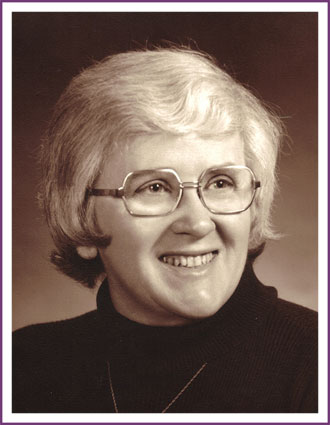ELIZABETH Joan HURST

• Youth Development
• Camp Fire Girls
• Women Advocacy
Inducted: 2013
Deceased: 2003
Seward
ELIZABETH Joan HURST
Joan Hurst was a passionate advocate for kids. For 35 years, she created and directed youth development programs within the Alaska Camp Fire Council and established before- and after-school childcare programs to help working parents. She initiated the first water-safety program to teach kids in rural Alaska how to swim, and she also developed the first non-sectarian, co-ed, nationally accredited resident camp in Alaska on Kenai Lake – Camp Kushtaka.
Hurst was raised in Madison, Wisc., and after teaching school for four years, came to Alaska in 1963 to serve as the first executive director of the local Camp Fire Council. Under her leadership, the council grew from a volunteer-driven, club-based program for girls into a comprehensive, co-ed, youth-development organization serving thousands of youth across Alaska.
Upon her retirement in 1998, the organization had grown from serving 350 girls in Anchorage to serving 5,000 girls and boys in Anchorage and Fairbanks as well as communities throughout rural Alaska.
During her tenure, Hurst spurred the national Camp Fire USA to expand its mission to address quality childcare based on the Alaska experience. The national chief executive officer of Camp Fire, Stewart Smith, said: “Joan Hurst created the model for how to provide before- and after-school care. She was a hero throughout the Camp Fire system.”
Former Gov. Tony Knowles said: “Joan’s vision for child care has helped change the lives of thousands of kids for the better.” And the former superintendent of the Anchorage School District, Carol Comeau, said: “Joan was a tenacious advocate for kids.”
Before retiring, Hurst negotiated the renewal of a 55-year lease for Camp Kushtaka and, in a forward-thinking move, she named a group of kids as the “stewards” of the camp. In 55 years they will be the adults who were given the responsibility to protect the camp when they were children. In this, as in all matters, Joan Hurst acted on her belief that adults should do right by children.
View Extended Bio